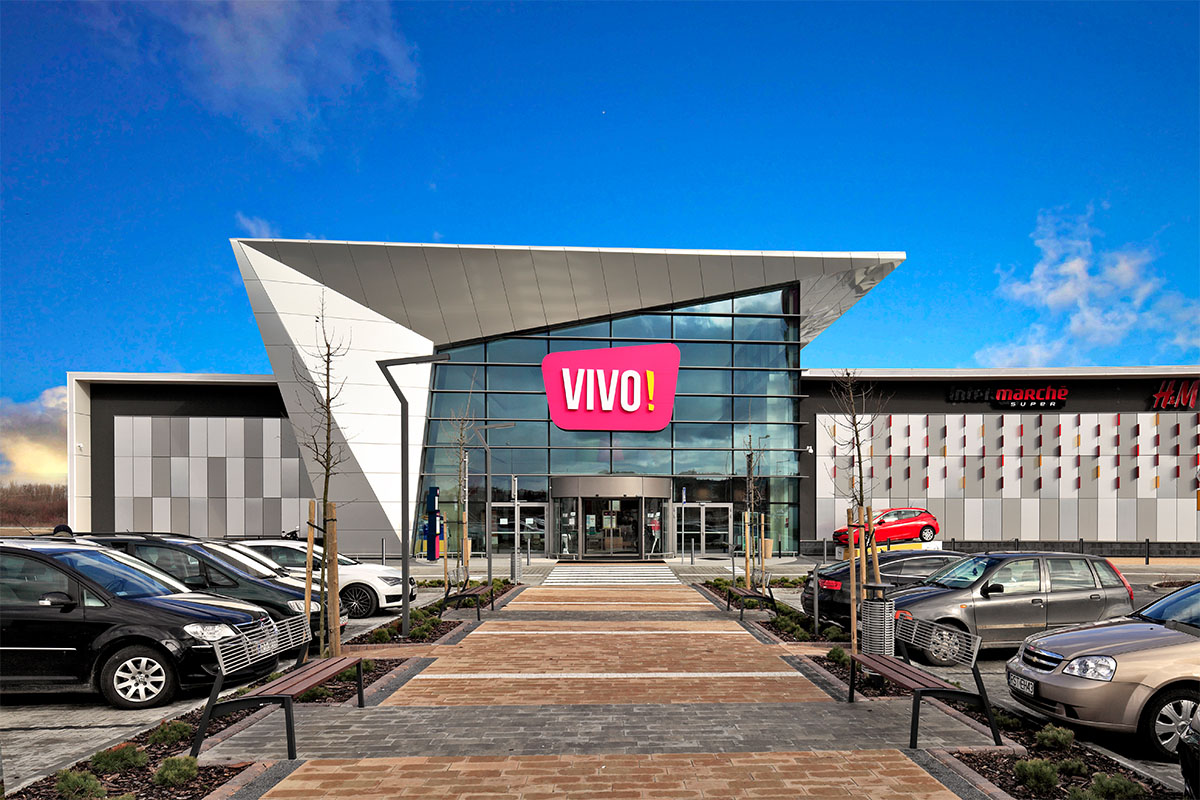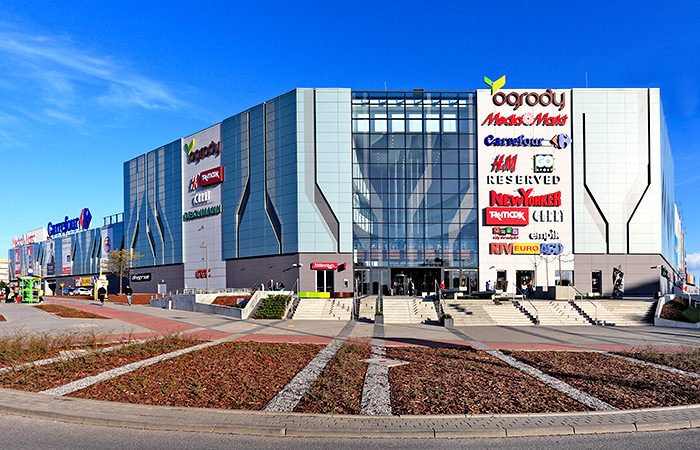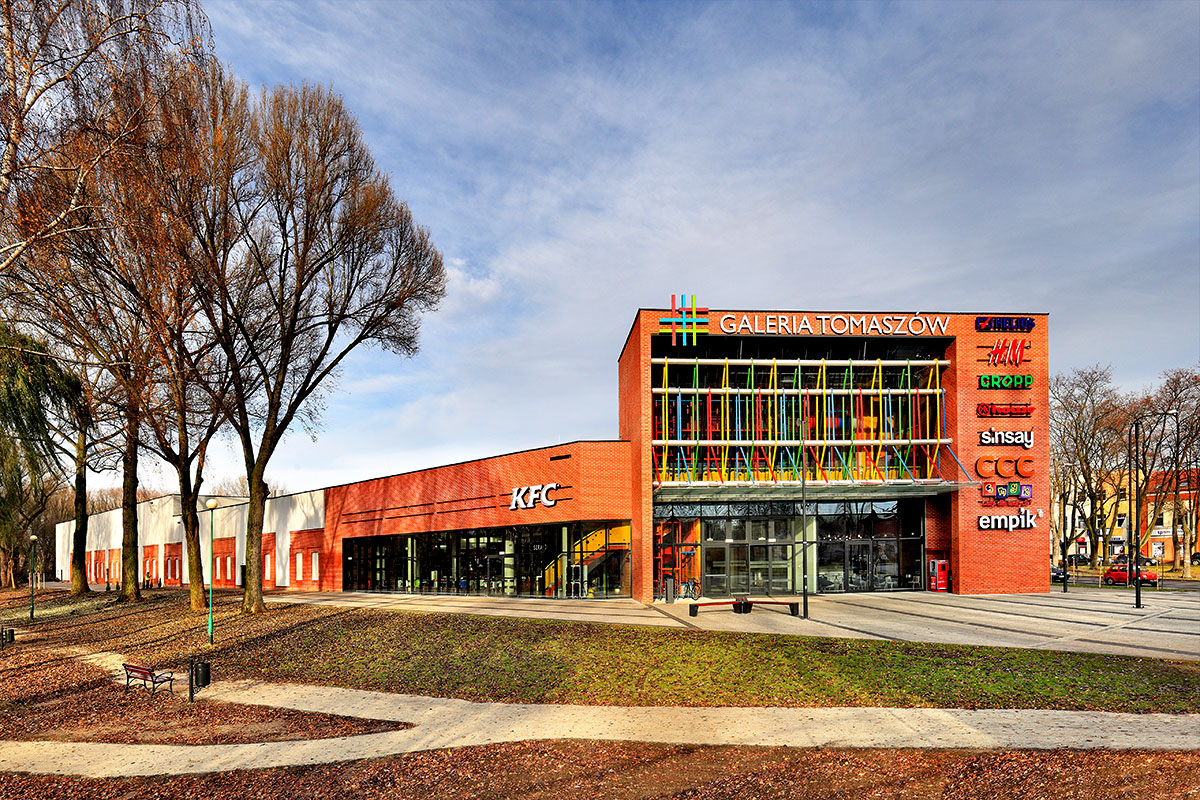Retail Development
Retail parks
The modern retail market has been developed in Poland over the last 30 years. Virtually no spaces and no retail formats have survived the transition from the communist based economy to the capitalist economy. The market was characterized by a massive inflow of western retail formats and retail developments, mostly inspired by the French style hypermarket anchored shopping centers. Category killers in electronics, fashion, shoes, sports, DIY, food and fast-food followed the hypermarket chains such as Carrefour, Tesco, Auchan, E.Leclerc, Géant and Kaufland. During this time, the market evolved in terms of locational preferences and product range as well as consolidation between major players, some of whom were struggling with relatively small market shares.
According to CBRE (“Retail Parks in Poland”, report dated April 2021) the modern retail space market was dominated in the year 2000 by the larger urban agglomerations with a share of 78% in total supply. In 2010 this was reduced to 61% of the total area, and 10 years later to 55%. In the analyzed period (2000 – 2020) the share of supply in small and medium-sized cities almost tripled. According to a PRCH report (PRCH Retail Research Forum, H2 2022 Report) shopping centers have a 83% share in modern retail space in Poland, followed by retail parks 15% and 2% for outlet centers. Currently, more than 53% of retail space is located in the largest agglomerations, 35% in cities from 100,000 up to 200,000 inhabitants, and 22% in cities below 100,000 residents.
The retail park concept has become the natural format for the increasing demand of inhabitants of smaller and then larger cities for everyday quick shopping, mainly groceries. The parks are close to the place of residence, with favorable prices, which for a long time was the domain of supermarkets and hypermarkets. Over the last 20 years (2000-2020), the share of retail parks in the supply increased from approx. 6% in 2000 to 15% in 2020. Customers appreciate retail parks for their local character, spacious and convenient outdoor parking
and a basic but comprehensive shopping offer, often combined with a grocery and/or multi-discipline discount store (like: Pepco, Kik, Dealz). Compared to shopping centers, the visitors save time without travelling long distances to reach stores and shortening distances between parking spaces and shop entrances.
In this market Acteeum Group is one of the market leaders with its Power Center Andrychow as a fine example of what characterizes the market: 24,000 square meter of retail space anchored by Leroy Merlin and Lidl, fully leased and sold shortly after completion in November 2021 to one of the new retail park investors. Currently Acteeum Group has four new centers under development, in Koszalin, Gorzow Wielkopolski, Ostroda and Siemianowice.
Shopping centers
The development of shopping centers in Poland has been characterized by a number of expansion waves over the past twenty years. In the mid-nineties western food retailers such as Carrefour, Geant and Auchan built large hypermarkets (10,000-20,000 sqm), often in combination with one-level galleries situated in front of the food store. Some retailers e.g. REAL, built power schemes with DIY, electronics and fashion boxes. Simple, out of town green field locations were first targeted. Competition between retailers, each trying to reach acceptable market shares, was severe. Retailers began renting space from developers and due to increasing competition rental levels were high. Leased retail objects became investment products and western European and American investments soared.
In a next wave (2000-2005) large schemes were developed, often in more challenging central locations, such as former factories, slaughterhouses, mine pits, railway stations. The entrance of new retailers increased the rent levels and the availability of equity and finance facilitated the enormous growth of development pipelines. While the investment market heated up, the retail environment started slowly changing. The retail market consolidated and a number of players left. Rent levels stabilized and the distinction between strong shopping centers and weaker opponents became visible.
The 2008 credit crisis accelerated the consolidation among retailers while development credit lines were closed. In parallel the rise of the online retail platforms began, influencing more and more branches and gaining market share year after year. Trying to adjust to the new situation the retail real estate market changed. Cost-effective retail parks emerged and schemes that were over-sized, overdesigned or delayed faded away at the drawing tables. Weaker players downsized and ultimately were taken over. The market focus became more straightforward. In big cities, big players continued to expand, apparently neglecting the risk of oversupply. In the tenants market of 2012 and onwards, rent levels fell, fit out contributions rose and values stabilized thanks to decreasing yields. In the big cities, big investors chase big products with big money: yields go below 6%.
Outside the main cities the development philosophy changed. The reservoir of dominant, strong centers to be built in regions still lacking basic shops, facilities, brands, leisure shrank. In the coming years the last of these type of centers will be developed. The focus is now shifting towards well-located schemes built in the past 10-15 years, showing a decent track record in footfall and turnovers. Redevelopment of the latter can be seen as both a defensive as an offensive move. Absorbing new retailers, adjusting existing spaces to new market demands, refurbishing and making more attractive and energy efficient buildings, and last but not least: preventing old-style, out of town, large scale schemes to materialize. Customers will enjoy not only a wider retail offer but also a fresh new meeting place in line with contemporary wishes and expectations.
This market segment is now becoming more and more important and even the largest and most sophisticated developers have adjusted their business models and are trying to catch the attention of the retailers and landlords. It is the market segment in which Acteeum Group has already established its track record and is now concentrating on sharing its experience with a new group of clients.




